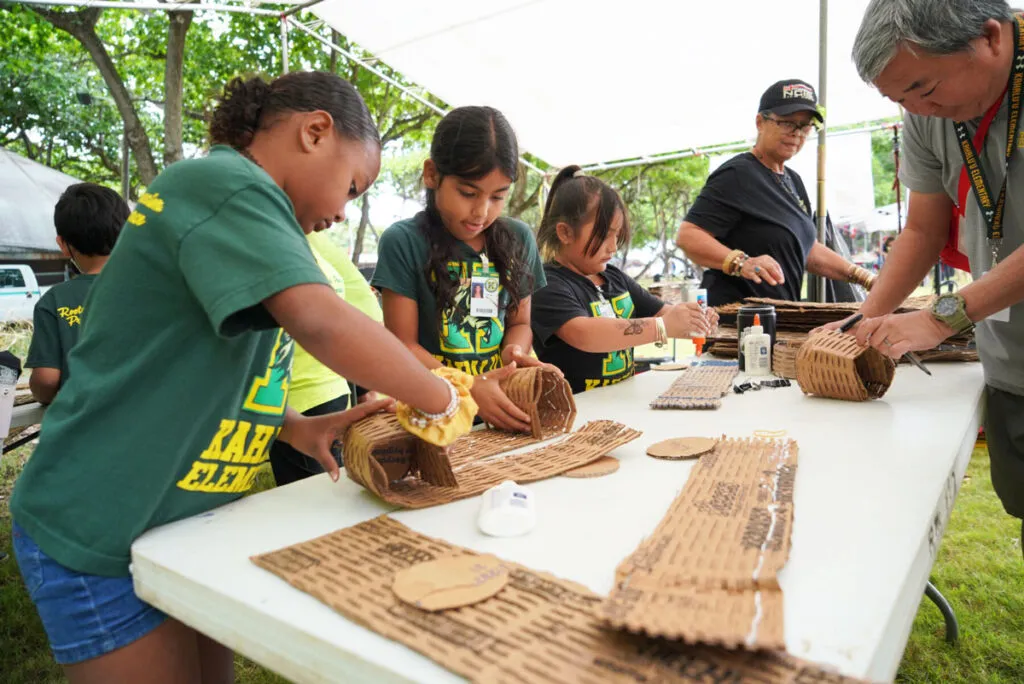Hawaii, a paradise island, is renowned not only for its pristine white-sand beaches and majestic natural landscapes but also for its rich repository of history and culture. To truly understand and feel the authentic “Aloha” spirit, there’s nothing better than immersing yourself in historical narratives conveyed through the unique art of storytelling by the native people.
From legends of ancient gods to tales of kings and queens, each story is a vital piece, helping us vividly envision the glorious past and profound cultural values of Hawaii. Join “Du lịch khắp thế gian” as we explore how the art of storytelling has become an indispensable part of preserving and spreading the cultural heritage of this beautiful island.
Storytelling: Bridging Past and Present
In Hawaii, storytelling is not merely the act of conveying information; it’s a sacred ritual, a means to connect people with their ancestors and with each other. Stories are passed down through generations, carrying with them the core lessons, values, and beliefs of the Hawaiian people.

“Ka moʻolelo Hawaiʻi” (Hawaiian legends) is an essential part of Hawaiian education, where students are encouraged to learn and use language, legends, stories, and art to understand their history and culture. The kūpuna (elders) play the role of keepers and transmitters of valuable knowledge, skills, and experiences to the younger generation.
Vivid Historical Tales Through Storytelling
There are many fascinating historical stories told through the art of storytelling in Hawaii. One of them is the legend of Pele, the powerful goddess of volcanoes, believed to have created the Hawaiian Islands. Stories of Pele not only explain the geological formation of the islands but also contain lessons about the power of nature and respect for the environment.
Another example is the stories of Kamehameha the Great, the king who unified the Hawaiian Islands into a kingdom in the late 18th century. The stories of Kamehameha’s life and career recount not only his military and political talents but also the vision and compassion of a great leader.
Hawaii Studies Program: Preserving and Promoting Cultural Heritage
To ensure that the historical and cultural stories of Hawaii are preserved and passed on to future generations, the Hawaii Department of Education established the Hawaii Studies Program. This program provides curriculum support and resources to integrate Hawaiian culture, history, and language into classroom lessons.
The Hawaii Studies Program was established in 1980 to implement the 1978 State Constitutional Amendment, which required the state to promote the study of Hawaiian culture, history, and language. The program’s goal is to support the infusion of Hawaiian knowledge, practices, and perspectives into various content areas, while supporting teachers and cultural resource people in gaining knowledge of Hawaiʻi’s culture, history, places, and language.
Ka Papahana Kaiapuni: A Journey to Revive Language and Culture
Another significant effort in preserving and promoting Hawaiian cultural heritage is the Hawaiian language immersion program, Ka Papahana Kaiapuni. This program provides Hawaiian language education from kindergarten through 12th grade, with the aim of developing a Kaiapuni lens that connects future generations to the Hawaiian way of knowing and being.
Ka Papahana Kaiapuni provides instruction exclusively through the medium of the Hawaiian language until the 5th grade, after which English is formally introduced. The program has grown significantly, providing families with a Hawaiian language option for K-12 public education in many locations across the islands.
Nā Hopena Aʻo (HĀ): A Comprehensive Education Framework
Nā Hopena Aʻo—or HĀ—is a whole-child framework to develop the skills, behaviors, and dispositions that are reminiscent of Hawaiʻi, while honoring the qualities and values of native Hawaiian language and culture. HĀ focuses on developing skills such as self-awareness, community-mindedness, responsibility, perseverance, and collaboration in students.
This framework helps the Hawaii Department of Education fulfill its obligations to both the Board of Education Policy and the Hawaii State Constitution, ensuring that all students have access to a high-quality education that reflects and respects Hawaii’s rich cultural heritage.
Conclusion
Experiencing the history of Hawaii through the art of storytelling is a profound and meaningful journey of discovery. From ancient legends to modern efforts in language and cultural revitalization, each story contributes to the panoramic picture of a unique and proud civilization.
When you visit Hawaii, don’t just stop at admiring the scenery; take the time to listen to the stories, learn about the history and culture of the islands. By doing so, you will truly feel the “Aloha” spirit and bring home unforgettable memories of a land rich in tradition and full of inspiration.